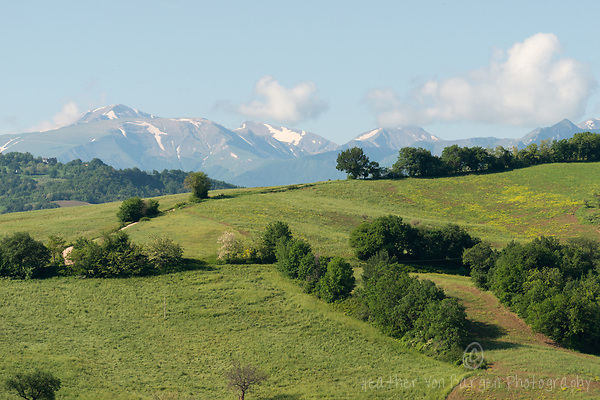
The Sibillini Mountains reassure my orientation as I get my bearings. But Le Marche’s southwestern border disappears often. Morning fog and afternoon clouds obscure not only their Stegosaurus summits but also any hint of their foothills. I peek reflexively from our house.
Part of the Apennine Mountain chain, the Sibillini are protected by a 270-square mile National Park (70,000 hectares). Twenty of its peaks are more than 6,562 feet (2000 meters) high. Inhabited since the Neolithic era, the Sibillini became known in the Middle Ages as the kingdom of fairies, mystics, and the prophetess Sibyl, who lived in a hidden cave near the top of Mount Sibilla.
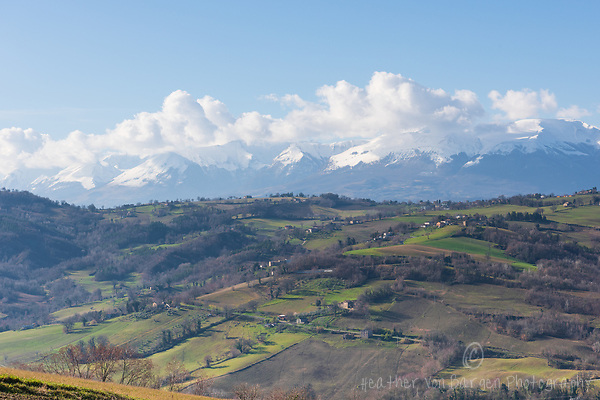
Knights seeking adventure, writers seeking stories, and travelers seeking answers all ventured to the Sibillini. A dozen towns scattered around the park and a system of shelters has long provided hospitality in this mysterious area. Today, ambitious hikers can trek the “Great Ring,” a 124 – kilometer long path that encircles the park. The rest of us can bike or walk the dozens of signposted trails; visit museums and old churches; bird watch; eat local food; view wildlife; and admire rare wildflowers.
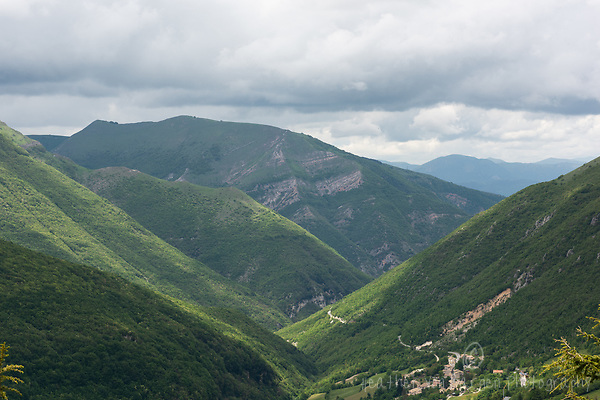
In February my husband Matt and I drove up into the mountains. It was snowing, dissolving in lower altitude, accumulating as we ascended. Nine particularly wicked switchbacks were numbered ominously. After the ninth we parked at a closed ski resort. Empty chairlifts stuck in midair.
A van parked next to us and children dressed head-to-toe in snow suits bumbled out, grabbed their sleds, and trudged to the edge of the hill where they disappeared. Families had taken over the ski resort to go sledding. Never had I wanted so badly to wear a giant snowsuit.
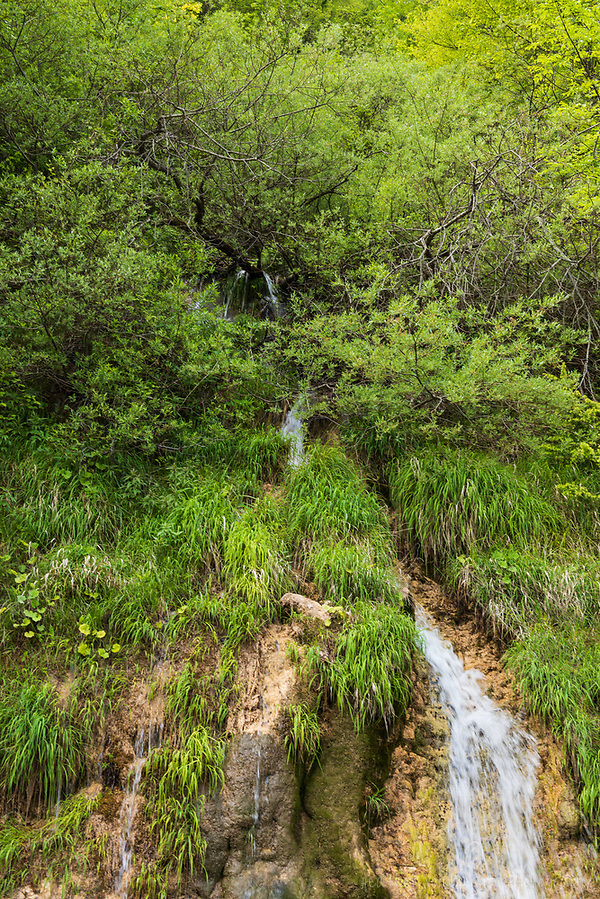
When we return in May the summits are less snow-capped and the snowmelt creates waterfalls along the road. We stop at one and I take a picture of Matt touching the icy water. It flows too fast to fill a water bottle. A driver passing by notices what we’re doing. He slows, smiles broadly, and nods in approval.
The Fiastra Lake is ethereal aquamarine when we reach it and walk the pebbly shore. Birds soar overhead, the only visible sign of life. The mountains’ reflection ripples on the surface, the air smells crisp.
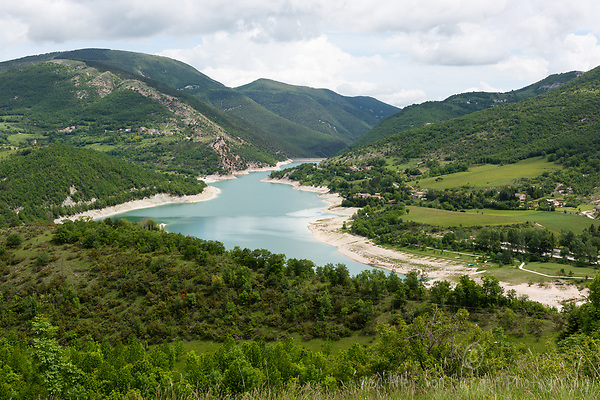
Small manufactured buildings line the main street of Fiastra. Temporary structures installed to house businesses until the buildings damaged by the earthquakes two years ago are restored to anti-seismic standards. Down an empty cross street, wood braces support still-beautiful pastel buildings. We wait in the car, stuck in a one-way street behind a gentleman who has gotten out of his car. He is looking for a place he cannot find. A man emerges from one of the buildings. They speak. The man shakes his head, points his finger. The driver nods. He walks back, not to his car but to ours, and apologizes for our delay.
Just outside of Fiastra, we follow a sign and drive up a steep narrow path I’m not certain was intended for vehicles. Tree branches slap our car. We park at the top, near an old church. A path lined with purple and blue wildflowers leads to the remains of the ninth century Castello Magalotti. Two of the original 7 towers still stand and a long stone wall runs along a walking route.
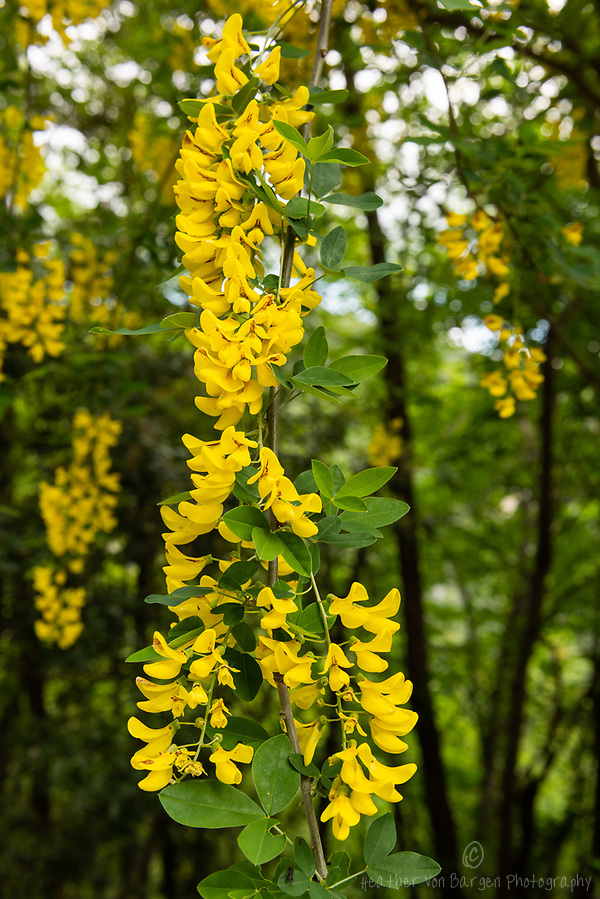
Driving deeper into the park, we pass alpine meadows, beech woods, wildflower gardens, limestone mounds, trees with cascading yellow flowers, and the same wild Sibillini Orchids that grow on our property. They are deep purple, almost burgundy on the top of the plant. As they open, they lighten to a creamy white with purple spots. They look like angels with a purple halo.
We reach a crossroads. The way left is blocked, earthquake rubble strewn in the road. Taking a right, we pass through a mostly deserted town. Walls collapsed, roofs missing, buildings torn in two. My camera sits like a privileged weight in my lap. I close my eyes as we pass; I don’t want to feel like a gawker.

That evening from our Le Marche home the Sibillini summits catch the last light of the setting sun. Pink clouds halo above the peaks. Two months later I read that the resilient residents of the Sibillini, who for centuries have excelled at and relied on tourism, are reopen for business. Ninety percent of the tourist facilities are ready to receive the travelers who come the Sibillini, searching for something.

